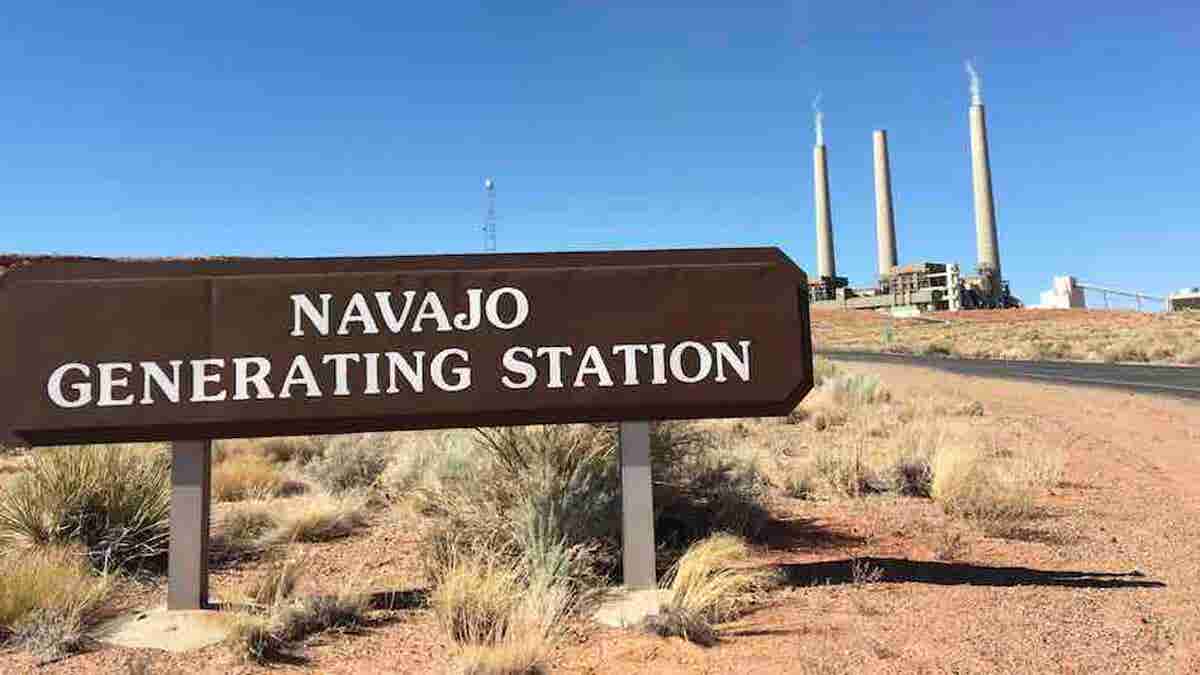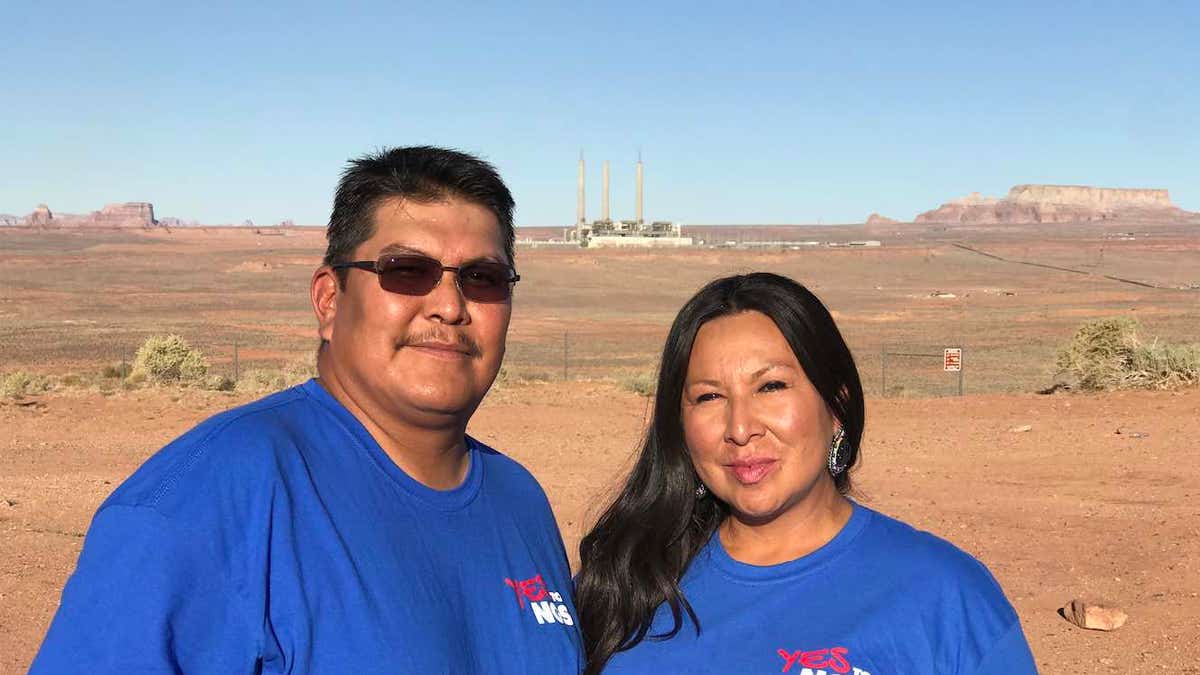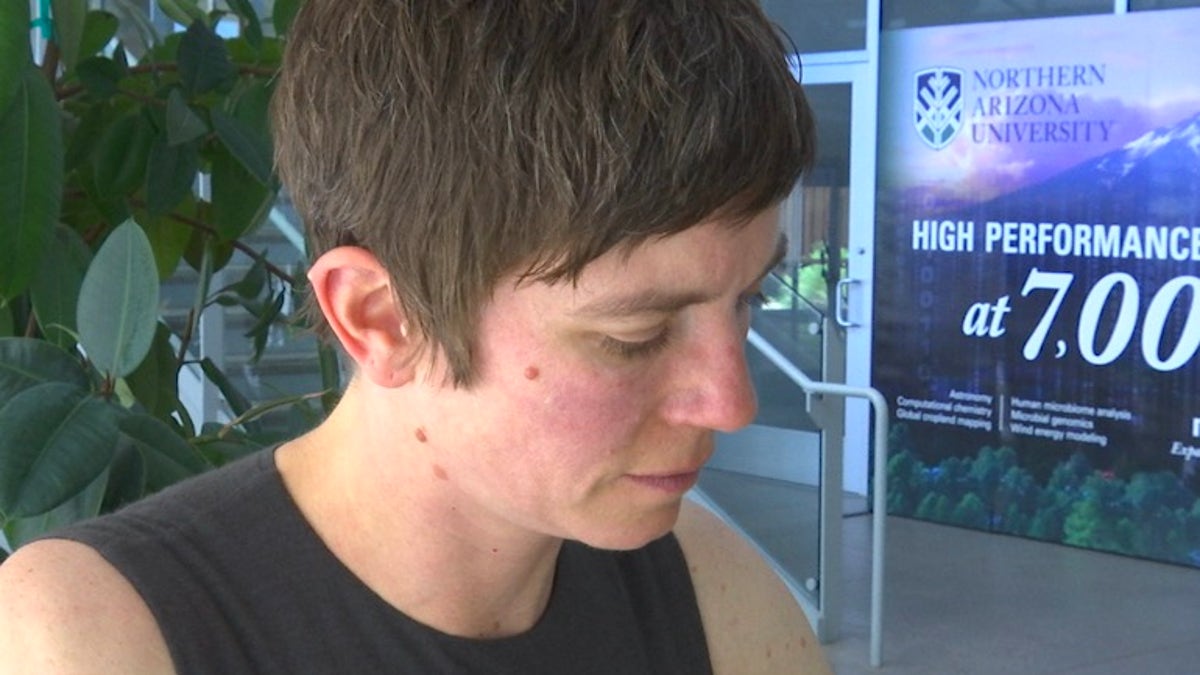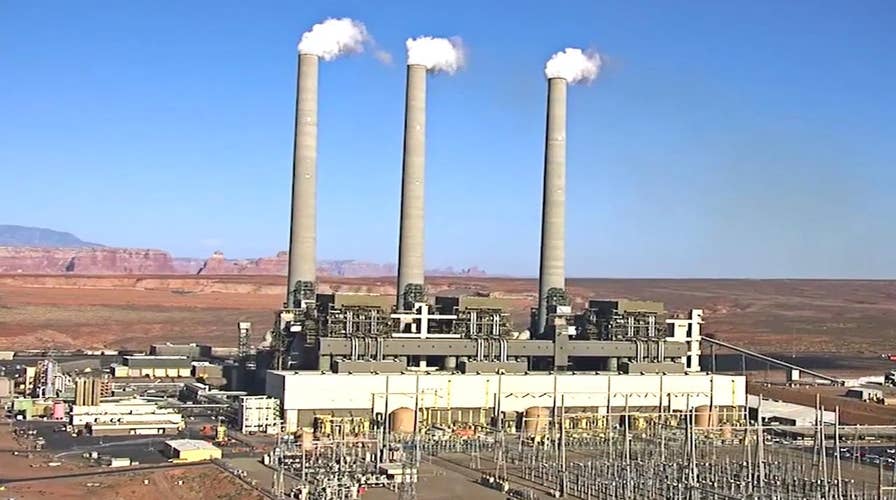White House aims to keep coal power plant
Energy companies are starting to use other forms of energy but one coal plant hopes to stay.
PAGE, Ariz. – Like many coal-fired plants across the country, the Navajo Generating Station in Arizona, which employs hundreds of workers, is at the brink of closure.
Coal has been the backbone of American energy for centuries. But today, companies are finding what they’re saying are more cost-efficient energy sources, such as natural gas or solar.
It’s why Salt River Project, part-owners of NGS, the largest coal-fired plant in the West—providing power to vast areas in Arizona, Nevada, and California—plan on shutting down all operations by the end of 2019.
“Going forward, if we were to have operated the plant beyond 2019, collectively we estimate we would have been losing anywhere from 130 to 150 million dollars annually,” Scott Harelson, SRP spokesman, said. “Costs that would’ve clearly impacted our customers and caused their bills to go up, and we simply couldn’t take that on.”

The Navajo Generation Station is located on the largest Native American reservation and is the largest coal-fired power plant in the West (Fox News)
Coal has been on the decline as of recent. In 2016, US coal production decreased by 18.8 percent year-over-year, making it the lowest annual production level since 1979; and the average number of US coal mine employees decreased by 21.5 percent.
Even with the coal drop-off, the President Trump administration is hoping to keep coal.
“In other countries, they love their coal,” President Trump has said. “Over here, we haven’t treated it with the respect it deserves. Even for defense, having that coal is a very important thing for us."
In Arizona, the federal government is also looking to step in and keep the Navajo Generating Station’s lights on. President Trump’s appointee in the US Department of Interior—Timothy Petty, Assistant Secretary for Water and Science, wrote a letter to Central Arizona Project—a water supplier that uses power from the coal plant, encouraging a further discussion with hopes of keeping the plant up and running.
“The Department of Interior is not sure what the answer is,” Tom McCann, CAP deputy general manager, said. “They didn’t have an answer. They simply raised questions and asked for continuing dialogue. We’re happy to continue that discussion with them about the future of NGS and about sources of power from the Central Arizona Project.”
"The Department of the Interior is committed to seek a post-2019 economically viable operation plan for NGS,” Dan DuBray, The Department of The Interior’s Bureau of Reclamation public affairs chief, said. “Interior's activities with myriad NGS stakeholders - including our discussions with the Navajo Nation, the Hopi Tribe, and the multiple tribes which rely on CAP water - are ongoing and productive."
“Whether that energy comes from coal or it comes from solar or it comes from nuclear or where it comes from—I don’t care—I want to provide the water reliably at the lowest possible cost,” McCann said.
But, Karin Wadsack, Northern Arizona University Earth and Environment project director, says the cost of electricity coal, which has been stable over a long period of time, is no longer competitive with other energy sources, such as hydraulic fracking, natural gas, wind, and solar.

Myron Richardson, a coal miner at Kayenta mine, pictured with his wife. “This is home…why can’t I have the same opportunity as everybody else in the world to work from home--why do I have to leave because they want to shut the plant down earlier than what the federal government has regulated them to,” Richardson said. (Fox News)
“At this point, the cost of electricity from coal, which has been stable over a very long period of time, is no longer competitive with those other sources,” Wadsack said. “That is something that is, to me, just a question of technology advancement. We couldn’t extract natural gas at the same price 20 years ago as we can now, so natural gas-fired power plants are more competitive…Since we invented electricity 125 years ago, things have always been evolving and changing—how we get our electricity, the cost of electricity to us. What we take into account we think about the cost of electricity.”
Wadsack also has concerns about the federal government stepping in on energy decisions.
“That is interfering with the market and that in the end is going to have an economic effect on the cost of electricity,” Wadsack said. “So, that ripples back to all the people that are paying for electricity.”
Harelson says SRP, along with the three other utility owners and the Department of Interior, who also owns the plant, ‘made the difficult decision” in February of 2017 to end operations and give some time for current employees to find work.
But, this plant is unique in that it is operated and run on the largest Native American reservation in the country—the Navajo Nation, which is comparable in size to the state of West Virginia.
“I think across the world, we’re moving away from coal, Wadsack said. “It’s really unfortunate for people whose lives are dependent on coal mining and for people who are geographically constrained. So, whether we’re talking about somebody who works at the Kayenta coal mine or someone who works at a coal mine in Wyoming or West Virginia and they’re family has been there for five generations or eight generations, it’s tough.”
While SRP has offered full-time employees positions elsewhere, over 90 percent of its workers are Native Americans—including Peabody Energy’s Kayenta mine, which provides the coal for the plant.
Marie Justice has been a coal miner for three decades and says the US Department of the Interior has a responsibility to keep the plant open after signing a 70-year agreement decades ago that’s not supposed to end until 2044.

“At this point, the cost of electricity from coal, which has been stable over a very long period of time, is no longer competitive with those other sources,” Karin Wadsack said. (Fox News)
“For me, it’s a chance to be home, to be where I was raised—this (is) my homeland,” Justice, who is a part of the Navajo Nation, said.
U-S coal mining operations started in the mid-1700’s and even dates all the way back to the 1300’s when Native Americans used coal for cooking an and heating—leading up to about 100 years ago when coal abundance made for a widespread use in heating homes and generating electricity throughout the country. Today, 56 percent of electricity in the US is generated by coal.
“We, as coal miners, have provided energy through World War II and through the years; and all of a sudden, at this point, everybody’s running,” Justice said. “But you know what—this has been the steady energy for this country.”
With coal plants shutting down nationwide, while the federal government tries to step in and keep some around—it makes for a complex dialogue in finding solutions with the development of new energy sources while communities rely on the coal industry.
Wadsack has been partnering with NAU and tribes that are affected by the potential closure of the Navajo coal power plant over the last decade.
“Nobody community wants to have all their eggs in one basket,” Wadsack said. “Nobody wants to have their community be entirely tied to a factor or a mine or something else because it makes you very vulnerable. So, for the communities across the country that are coal dependent, if they have more opportunities of different kinds, just like with your investment portfolio, they’re less vulnerable and they’re more able to weather the storm as we do evolve through the power sector through other industry changes.”
Peabody Energy, the United Mine Workers Association, and the Hopi Tribe (coal miners are a part of this Native American tribe) are suing Central Arizona Power. In a press release, they jointly say NGS was built at the direction of the federal government to serve as the power source for the CAP and to “help fulfill the federal government's trust responsibility by providing jobs and revenues for the Hopi. Much of Arizona's growth and prosperity has come from the generation of affordable power and access to water.”
Justice believes the price of natural gas is volatile and coal miner Myron Richardson, also part of the Navajo Nation, says coal is reliable.
“This is home, everything that you see right here is home to me…why can’t I have the same opportunity as everybody else in the world to work from home.--why do I have to leave because they want to shut the plant down earlier than what the federal government has regulated them to,” Richardson said.
"Tribal leaders agreed to develop a mine and a power plant on sovereign lands using tribally owned coal to move water across the state with the assurance that we would receive a sustaining revenue stream for 70 years," Timothy Nuvangyaom, Hopi chairman, said in a press release. "The loss of 85 percent of our annual general fund based on the whims of the utility owners and the CAP would be devastating to the Hopi people. CAP staff cannot be allowed to continue this illegal approach. This plant should operate another quarter century as Congress intended."
Talks between CAP and The Department of Interior are continuing, as the coal energy debate continues nationwide.






















